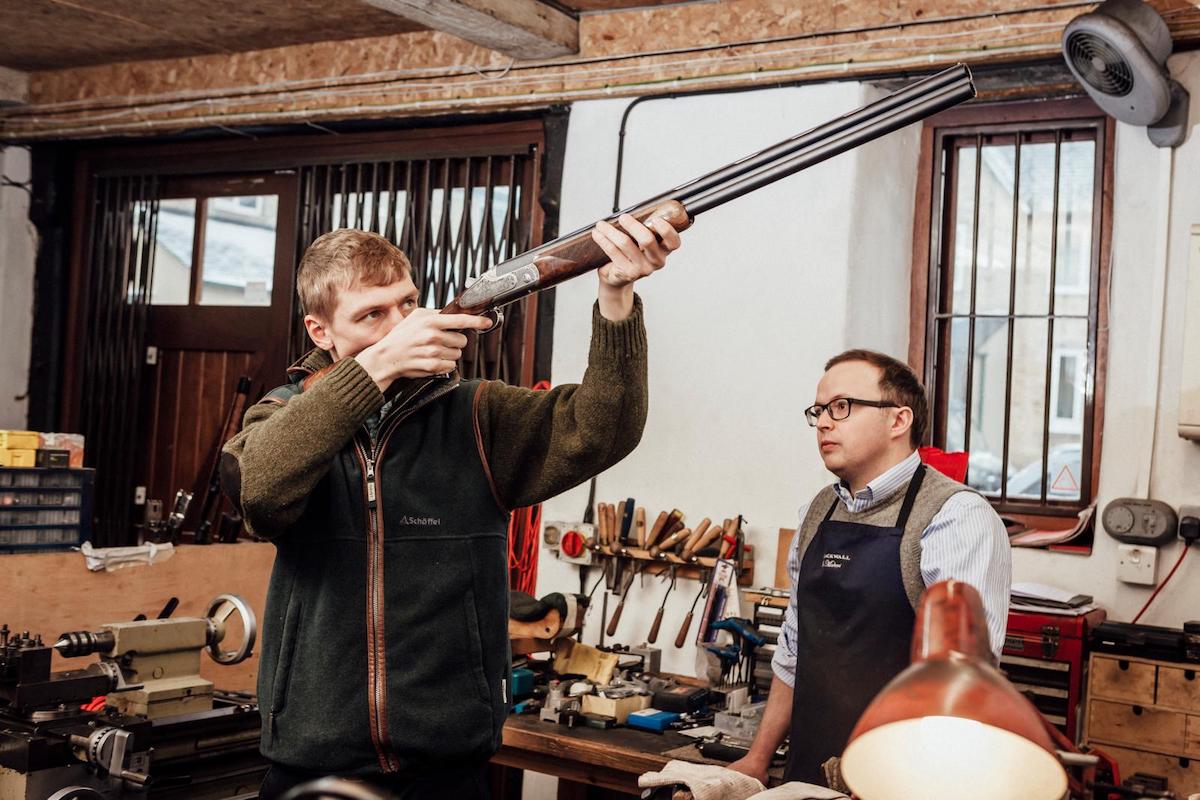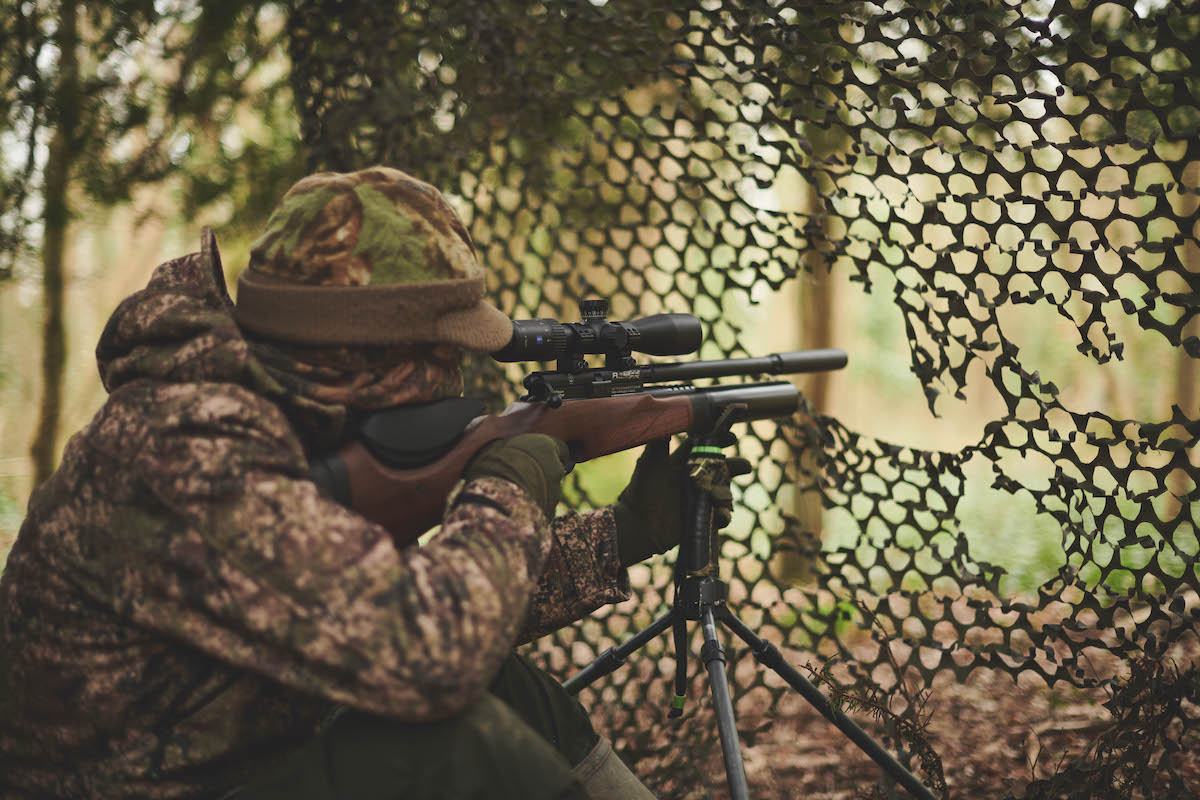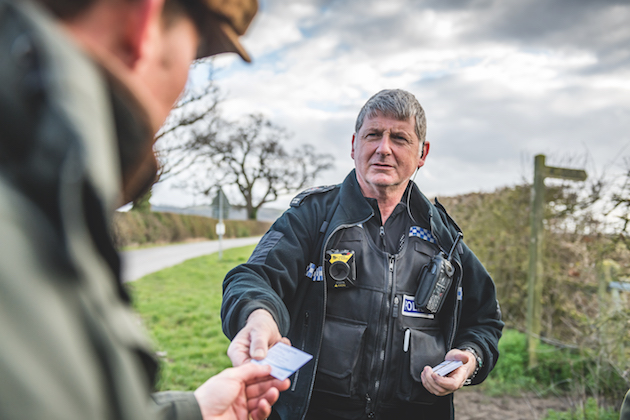A complete guide to hard hitting .25 calibre air rifles
So .25 calibre air rifles only good for shooting rats at close range, right? Jonathan Young begs to differ...
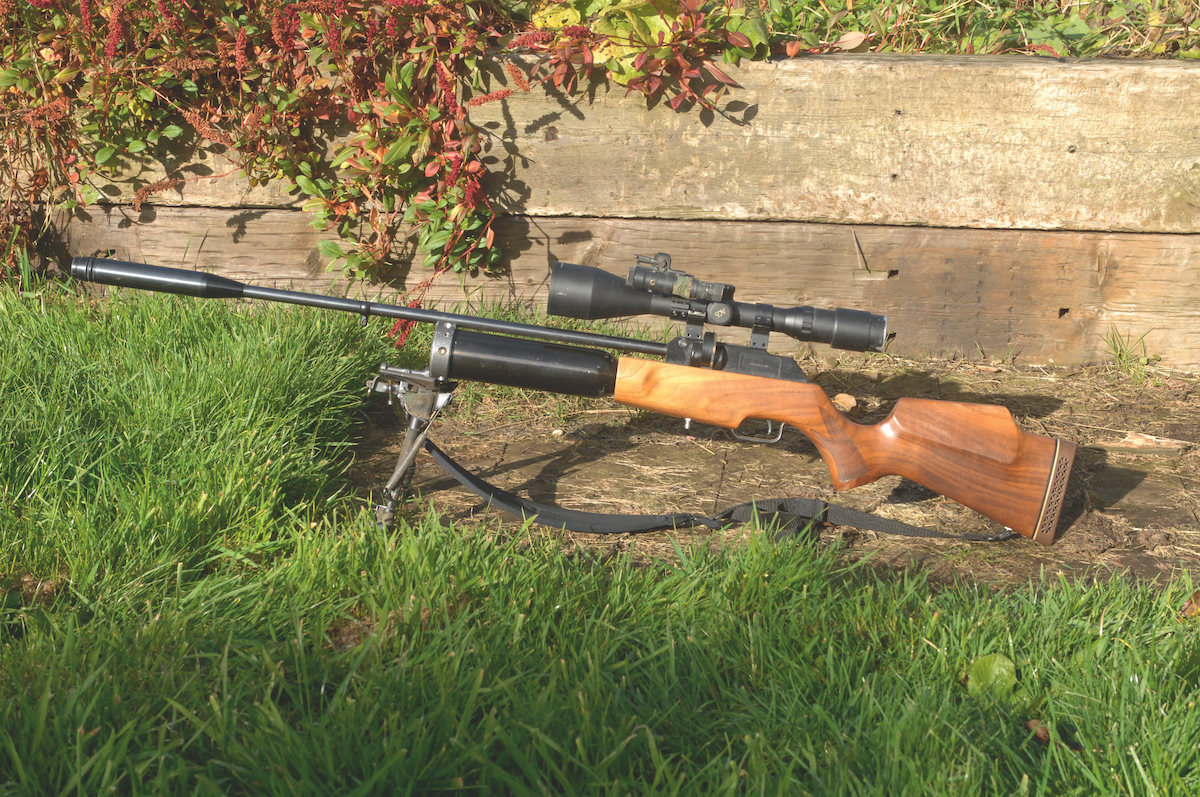
Theoben Rapid 12-250 air rifle
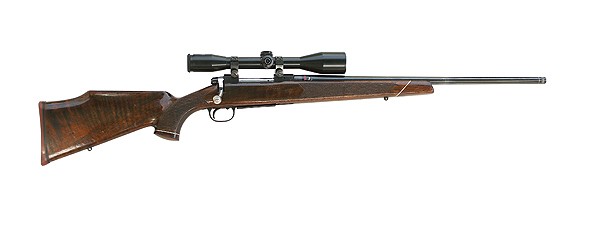
Hunting a rabbit with a .25 would be like throwing a pork pie at it
Answering an Airgun Answers query about . 25 calibre air rifles brought up some old musings for me about this calibre in traditional sub-12ft-lb guise. Most of the rhetoric is levied by people who have only tried it for one session, using one particular gun and one type of pellet, and then walked away disappointed. (Read Bruce Potts on the .25 calibre airgun performance. )
Background to . 25 calibre air rifles
So . 25 calibre air rifles have been around since the start of British airgun shooting, way back before World War I. But new club target shooting drove the popularity of the zippy and cheap .177 calibre, and .22 cal slowly gained popularity as well, while the big . 25 calibre guns fizzled along quietly in the background. (Read which airgun calibre should you pick and why?)
By the 1970s people were either into target shooting or hunting. For those who dared to do both, up and down the land people faffed on about fur and feather, claiming which calibre was only good for each quarry species. Then, as if from a different universe, came .20 to mix it up even more. But the reality is that you can shoot effectively with what you already have with only a little preparation and practice.
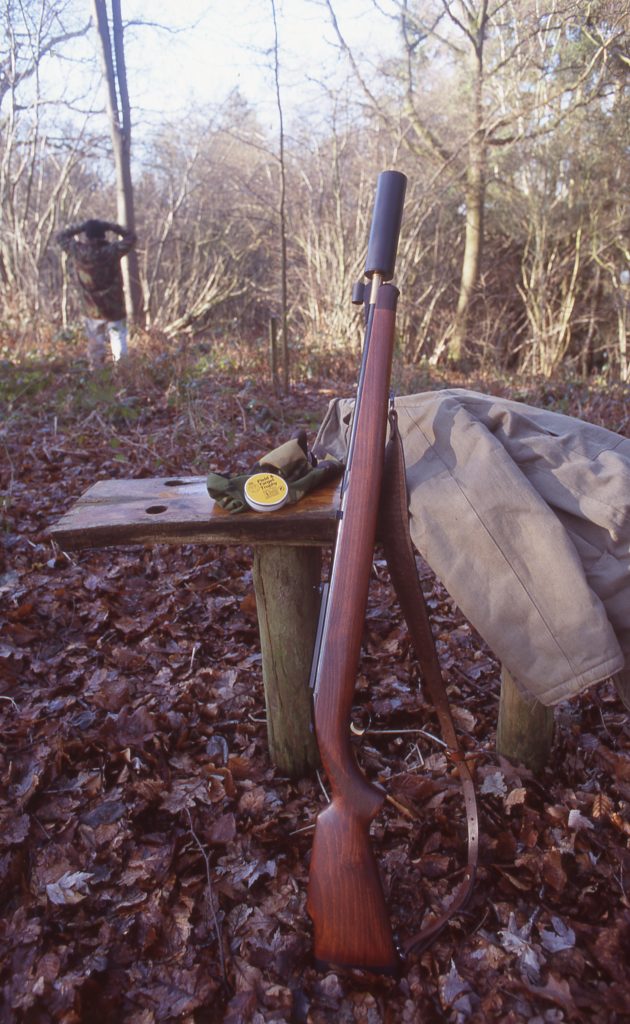
BSA Airsporter Stutzen Rb2 .25
In the 1980s, the .25 (6.35mm) calibre made a proper comeback. With hunting firmly on the agenda, airgun manufacturers caught on quickly – and so did pellet manufacturers. Many .25 sub-12ft-lb air rifles and some sub-6ft-lb air pistols appeared, along with a small arsenal of big pellets. (Read our list of the best airgun pellets.)
No two guns perform identically, and testing to get the best combination of pellet to gun in any calibre is a must. Ignoring this is the root cause of claims that .25 is too big, too slow or not worth trying unless it’s at FAC levels. Sure, .25 would be stunning at 35ft-lb – but it would be stunningly expensive too. The oft-repeated nuggets of wisdom about .25 are that it’s for close encounters only, and is best used for rats up to 15m away. In fact, you can counter all this by using lighter pellets and practising your stalking technique.
So once we have ignored the chatter and gone out and bought our .25 because we aren’t easily led by others, what’s next? If the biggest advantage of .25 is its stopping power, its biggest disadvantage to many people’s minds is its pronounced trajectory. That the bigger lump flies more slowly than a tiny .177 is no surprise, as it conforms to the laws of physics. Some people even believe quarry will run away before the pellet strikes. But all species are extra-alert when they’re out in the open, and even a noisy hammer on a PCP can make them bolt.
Unlike the flatter-shooting .177, some claim the .25 is too loopy – but all calibres are affected by this. We live on a round planet with gravity, so everything from pellets to a football up to an artillery shell will have an arced flight path. This doesn’t stop the Army hitting things miles away. You just aim a bit higher. Someone once told me that hunting a rabbit with a .25 would be like throwing a pork pie at it. For that one I had no quick reply – it just creased me up so much I couldn’t stop laughing. But if you ask any rabbit who’s been hit by a .25 cal 20-grain pellet what it felt like, you won’t get an answer from them either.
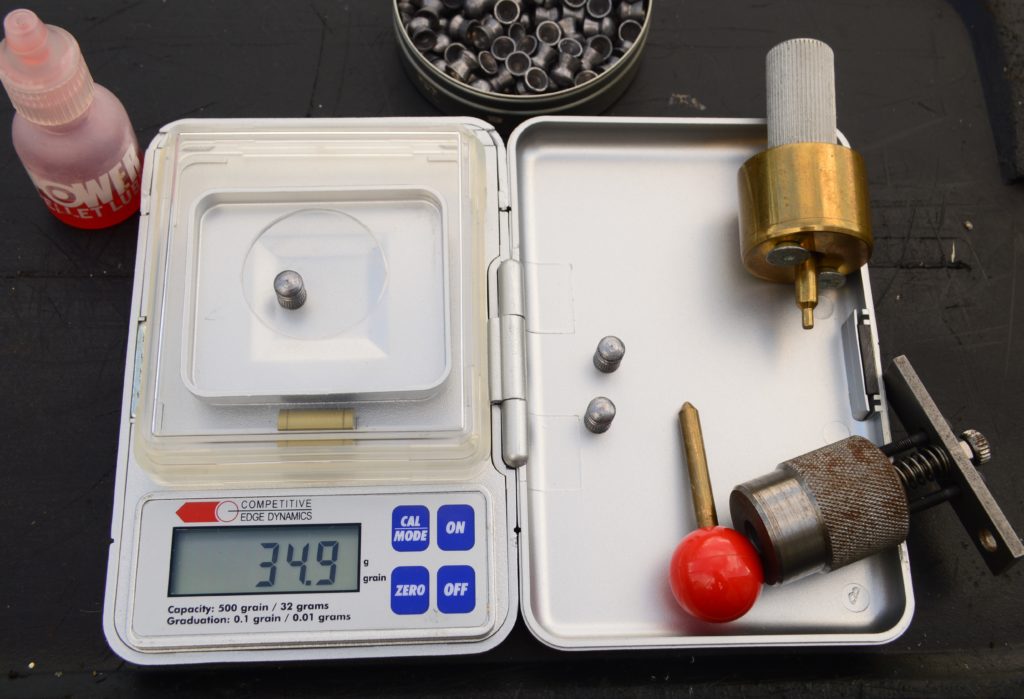
Tuning a .25 tuning involves weighing cleaned pellets, sizing and lubing them
So what is the answer? Know your aim points. Any zeroing or impromptu point-and-shoot session at a club bench, where you’re shooting at a known distance, will hide or mask the effects of ballistics and gravity. But when using a heavier pellet over varying distances, the differences are more dramatic and require a bit more thought for each shot. This is just as true when shooting heavy .22 pellets as it is when shooting .25 in a sub-12ft-lb gun. Knowing where to aim – combined with impeccable range estimation – will pay dividends. Once you’ve done some basic homework to find how your particular .25 rifle and pellet combo behaves, the rest should be relatively easy.
Airgun basics can be forgotten quite easily, so it’s important to give your rifle a quick check. Loose stock fixings on springers can affect accuracy in any calibre. Triggers on any type of airgun need adjusting to your preference – just work with your gun, there’s no need to fight it. Check open sights or scopes and their mounts. Something that was tightened over a year ago, or even after a few tins of pellets, needs checking to ensure it remains tight.
Barrel cleaning is not something that everyone likes, but it will be necessary at some point. Even cleaning between pellet types is recommended by some shooters, as manufacturers use different lead alloys. This is why some pellets appear dark grey, while others are bright and shiny.
Ammunition
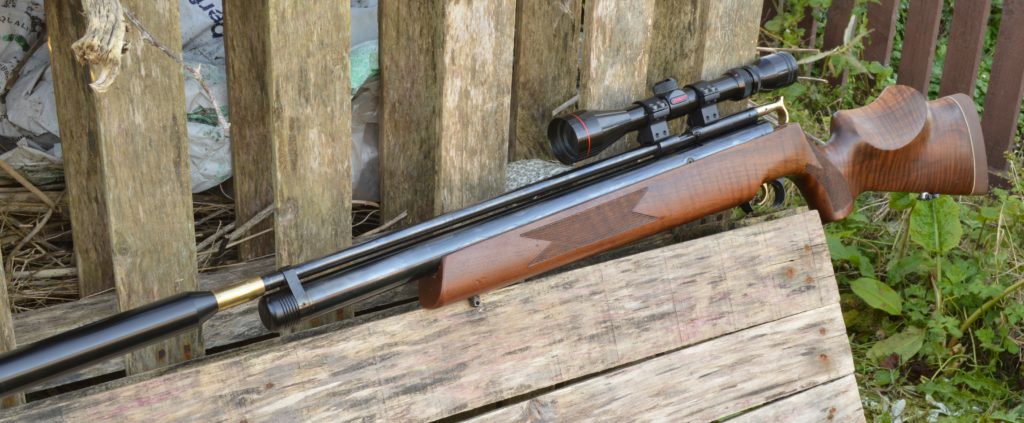
This Daystate Huntsman .25 wears a Tyrolean walnut stock
Ammo choice is a priority. The airgun market has been geared towards PCPs, which (along with CO2) love heavier projectiles. But many extreme heavies are too much for serious use below 12ft-lb and are of little use in springers, which thrive on lighter pellets. There are fewer lighter .25 pellets available, but there are still just enough to make comparison tests.
What to choose for . 25 calibre air rifles? Brands like JSB and H&N are widely known. The latter’s Field Target Trophy is a personal favourite at nearly 20 grains. The lighter Milbro Rhino was feared to have died, but SMK confirmed it is now marketing these again, still available in the original green tin that had the famously undersized head and the newer yellow tin in true 6.35mm. BSA Pylarm and Marksman .25 are old-time lightweight favourites, and recently some very light lead-free pellets have appeared, including sub-15 grain Gamo PBA Platinum and Predator GTO at sub-17 grain, dropping the weight further. Buying and trying across the spectrum from light to medium to heavy will be very useful whatever you use.
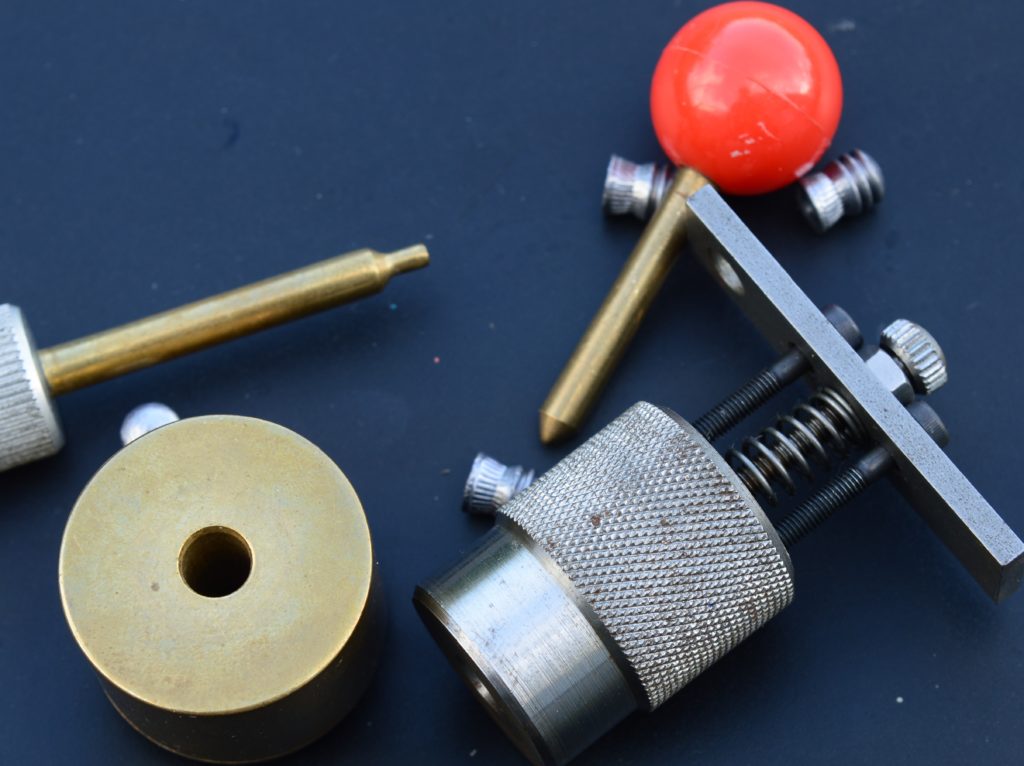
As the name implies, the TR Robb Adjustable Sizer (right) is fully adjustable, while the other is a pre-set sizer
So after getting together a selection of pellets, what’s next? Emptying a tin out onto a piece of kitchen towel will reveal how clean, dirty or damaged they are. There can be loose lead fragments left over from the manufacturing process, irrespective of brand or cost. An old kitchen sieve can be used to shake loose any swarf, and washing the pellets at this stage is easy. Today this may not be considered necessary, but it was once the norm for any calibre. In .25 at sub-12ft-lb, any preparation helps. (Read Mat Manning on how to wash your airgun pellets.)
After drying, a pellet sizer can be used on each pellet. Many regard this as unnecessary. Perhaps that’s so in some bolt-action guns, where the bolt is in effect sizing the pellet to the bore. The skirt is the thinnest part of the pellet, and damage has little to do with the quality of the product or its maker. Mass has to be lost from somewhere to give weight reduction, so the skirts on lighter pellets often show damage. There are claims that the blast of air on release is enough to resize any irregularities in the pellet, but how does anyone really know? A sizer is a simple tapered tube in a specific diameter into which the pellet is dropped then pushed through. Rather than just being used for repair, all pellets can be sized again to a uniform standard.
As well as repairing pellets, the sizer is a valuable tuning tool. Consider that even on undamaged pellets the skirt can cause too much drag. This will slow your pellet as it grinds its way up the barrel, wasting precious kinetic energy. A sizer made specifically for your barrel can reduce drag while still allowing the pellet to be spun just enough by the rifling. Too little sizing and you’ll get no added benefit; too much and you’ll end up with less-than-optimum propulsion.
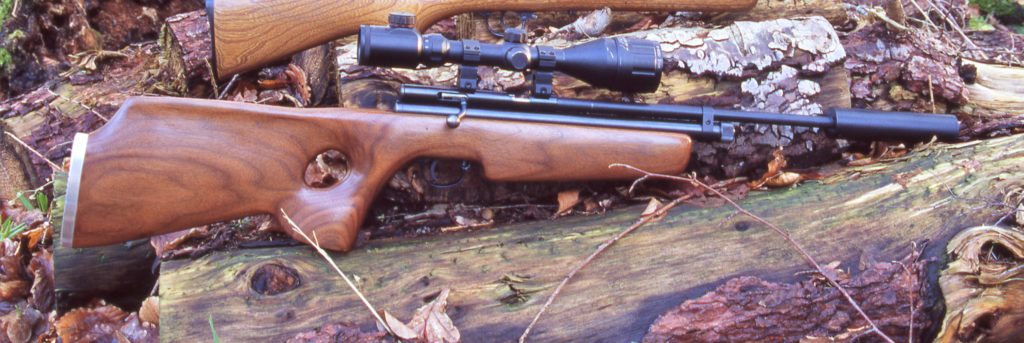
Not all .25 rifles are air-powered – this XS78 Custom runs on CO2
Sometimes pellets are far too tight in a particular barrel. While the tin may say 6.35mm and the barrel may say 6.35mm, this does not always mean that they are an exact match. Many German pellets are very tight in classic BSA gun barrels, for example, the advice usually given is that for a period these barrels were made slightly undersize to something like .243in and not true .25in. A barrel can even be oversize. Lining up a row of pellets on a hard surface and pressing them very gently will flare the pellet skirt without distorting the head. Used as is, they will lack consistency from pellet to pellet and with the usual drag resistance noted previously, or they can be resized down uniformly for that particular gun. A vintage GEM rifle, for example, can really come to life with modern pellets, even if the barrel may be nearer 6.50mm.
Sizers can be made to order by any good hobby engineer, but with so few available ready-made, mention must be made of the TR Robb Adjustable Sizer. Here, the tapered tube has an adjustable rod and can be preset to any depth allowing for pellet sizing to many variations. Counting the number of turns of adjustment on some test pellets, then locking it off will allow a full tin to be worked up quickly.
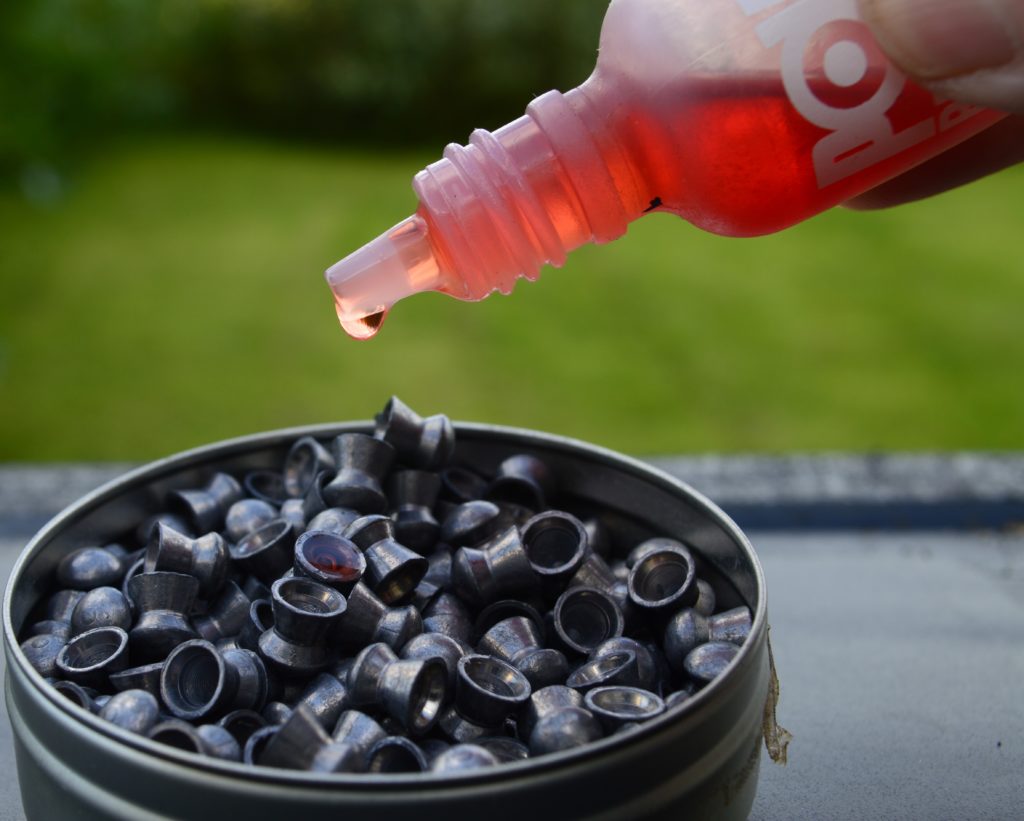
Tip the pellets onto a cloth before adding lube: you want to avoid it pooling in the skirt
Another item to mention is a pellet seating tool for break-barrel springers. After loading a pellet, this tool – which is usually a piece of turned and polished brass or plastic – is used to push-form the pellet skirt to match the barrel. This seating is not a sizer, but makes each pellet’s skirt identical in situ, so you can expect more shot-to-shot consistency.
Next on the agenda is pellet lubrication, once a hot topic that’s now fallen silent. Lube is claimed to ease pellet resistance, with a few drops or misting from the pump spray all that’s needed to lube a whole tin. Various brands are available, while some people even make their own using different oils. Without any of this prep work we would be firing sometimes oversize, sometimes dirty pellets down sometimes dry or dirty barrels. With clean, lubricated, consistently sized pellets, we increase the percentage of smaller group sizes on target.
Weighing and chronographing pellets at some point in the process is useful. While we need to know we are operating legally, it’s always interesting to know what difference there is between different pellets. (Read more on chronographs for airguns)
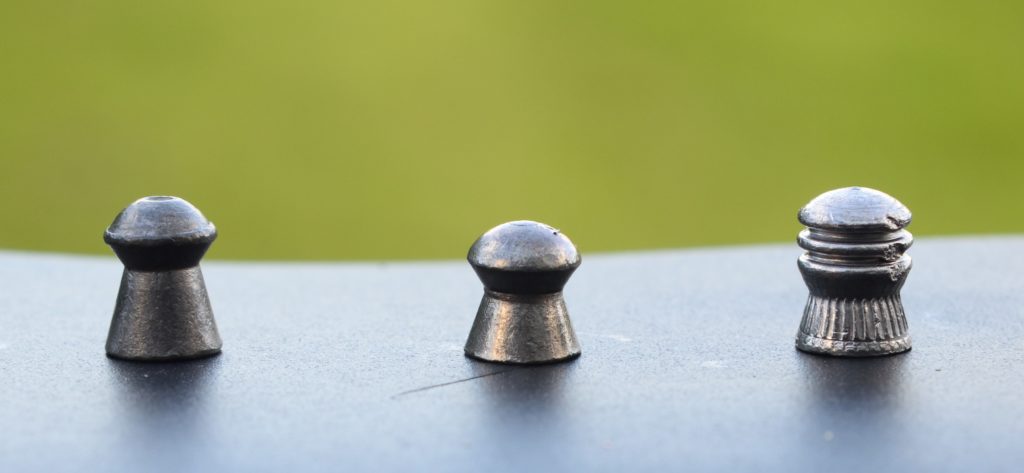
Shapes and weights can vary hugely in this calibre: just compare these Bisley Super Field, H&N FTT and Dai Sung pellets
At this test stage, however, do not be surprised if the best pellet on target gives lower figures than others over the chronograph. The difference between 9.5ft-lb and 11.5ft-lb is of little consequence to a rabbit, so after ensuring legality, accuracy on target matters more than maximum power.
Any test session now is going to reveal which pellets group better. Remember some basics such as hold when using springers. Also, as testing will usually be carried out over a prolonged period, try to maintain a constant ambient temperature for CO2 and sweet-spot fill pressures for PCPs. Some pellets will sparkle when others will seem awful, but never discount any pellet as rubbish: it may do better in another gun. Prepare also for surprises: that cheap grey lump may work better than the shiny bright thing that cost several pounds more. Cleaning a barrel between pellet types is up to the tester. Grouping is of importance here rather than hitting the bullseye. If all are good, then that gun and its barrel are very forgiving. If some are totally off – and this was not due to a crosswind – it’s clear this gun and barrel do not like that particular pellet.
Now, after relatively little effort, you will end up with a single pellet or maybe even a whole selection that you are totally confident works well in your . 25 calibre air rifles. And that means you’re ready for some real airgun fun.

